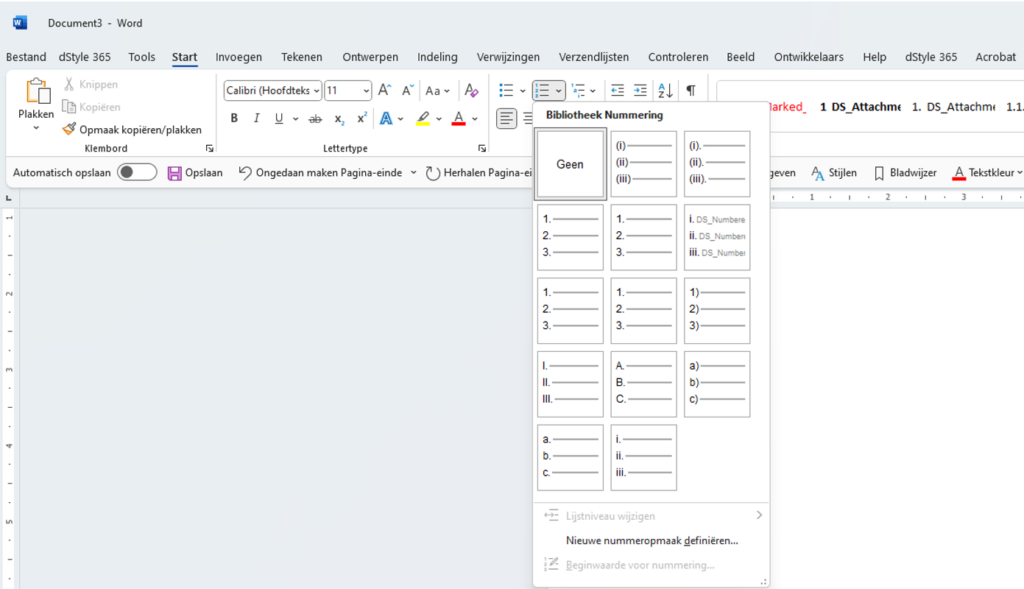In Microsoft Word, there are two types of lists: numbered lists and multi-level lists. Although they are both used to display information in a structured way, they have some important differences.

Numbered lists
A numbered list is a list in which each item is assigned a unique number. This can be useful when the order or hierarchy of items is not an issue, but each item must be identified by a specific number. Numbered lists can be used to present, for example, instructions, step-by-step plans or listings. Word offers several layout options for numbered lists, including different numbering styles and customization options.

Learn more about using numbered lists in Microsoft Word and how dStyle/LegalWord makes it easy for you to work with.
Multi-level list
On the other hand, multi-level lists provide the ability to organize information in a hierarchical manner. They make it easy to display underlying relationships between items. Multi-level lists allow you to create sub-items and main items, allowing you to structure and present complex information. This is especially useful when creating, for example, a table of contents, a roadmap with subprocedures or a hierarchical view of information. Word offers different levels for multi-level lists, allowing you to create a detailed structure.

Learn more about using multi-level lists in Microsoft Word and how dStyle/LegalWord makes it easy for you to work with.
In general, it can be said that numbered lists are appropriate when the order or identification of items is important, while multi-level lists are useful when you want to organize information hierarchically and add sub-items. The choice between the two types of lists depends on the purpose and nature of the content you want to present.